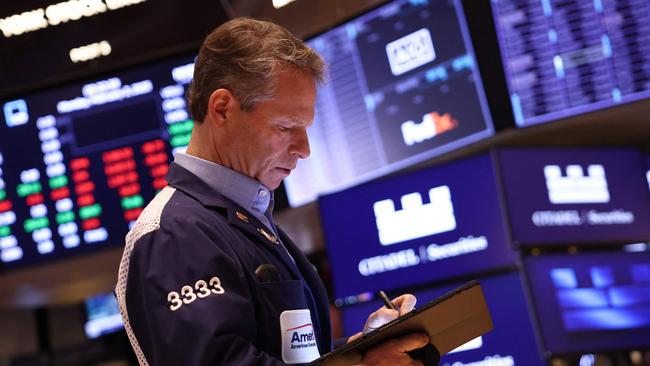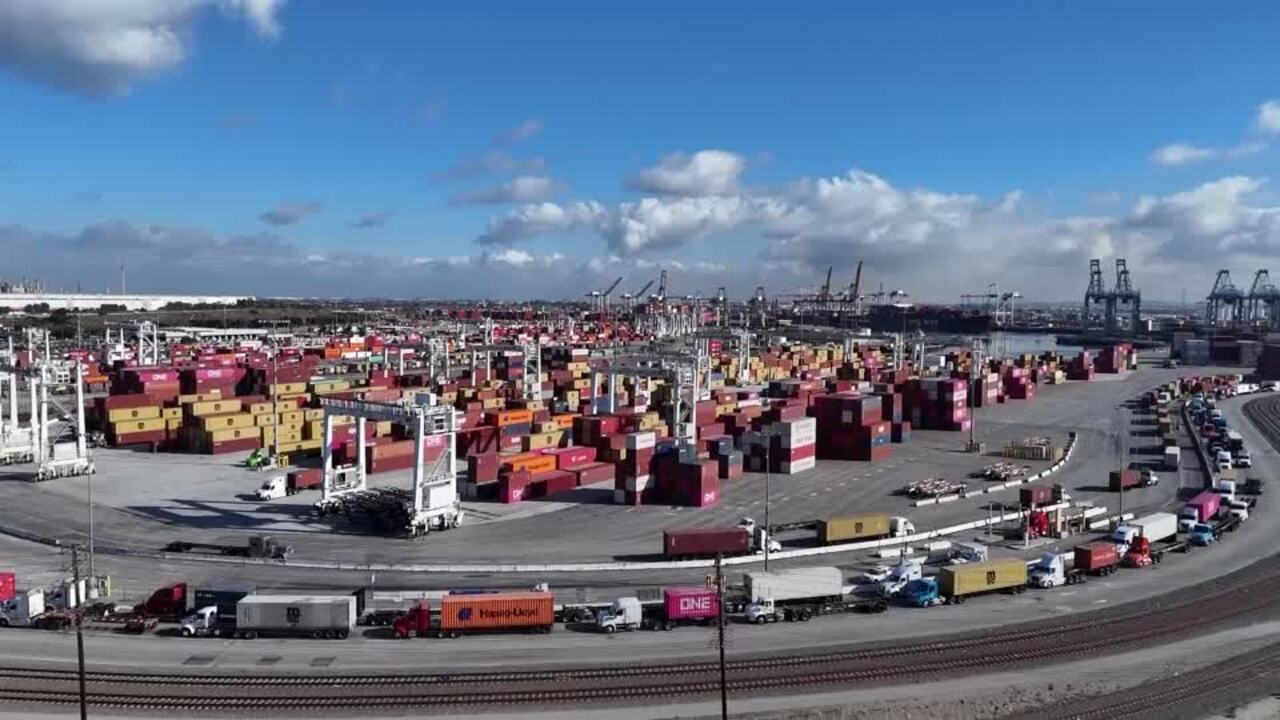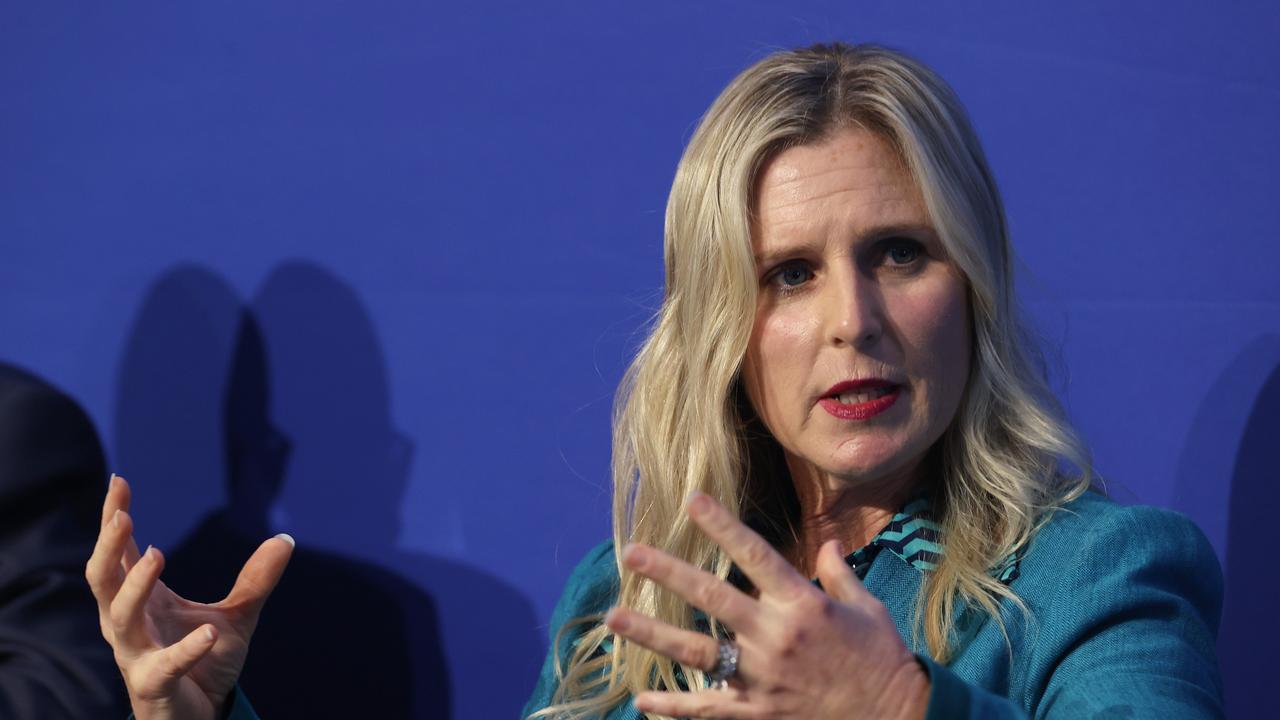Markets rebound but jitters over US trade policy are set to linger
Markets bounced back this week after tariffs on Mexico and Canada were delayed by Donald Trump, but a trade war could be just getting started.

Business
Don't miss out on the headlines from Business. Followed categories will be added to My News.
It was another rollercoaster week for markets as uncertainty around US trade policy came to the fore. But by Friday week markets were back on the rebound before the release of US non-farm payrolls data.
At the start of the week, Australia’s S&P/ASX 200 stock index had its worst day in the past six months, but by Thursday the local bourse was testing its record high as banks continued to soar.
Similarly, after hitting a new five-year low of US60.88c, the Australian dollar rose over 1 per cent for the week amid a reversal of strength in the US dollar as US policy jitters waned.
Both the ASX 200 and the Aussie dollar saw worrisome intraday falls of 2 per cent on Monday, when the US was set to go ahead with 25 per cent tariffs on Mexico and Canada, as well as a 10 per cent tariff increase on China. Even as the China tariffs went ahead on Tuesday, sparking retaliatory tariffs from China that saw secondary falls in risk assets globally, the delays on tariffs for Mexico and Canada announced by US President Donald Trump early on Tuesday sparked significant rebounds.
Mr Trump may have been partly motivated to delay the tariffs on Mexico and Canada by one month because of the sharp falls in US stock index futures that occurred in Monday’s Asia-Pacific trading. S&P 500 futures fell 2 per cent and Tesla dived 5 per cent.
The sell-off in Tesla was magnified by a threat from Canada to retaliate with its own 100 per cent tariffs.
The tariff delay reinforced the longstanding perception that Mr Trump is indeed sensitive to market movements and will adjust his policies if the US stockmarket falls sharply. During the election campaign, fund managers were convinced that “market discipline” would stop the US President from implementing radical policies with market implications.
When it comes to potentially market-moving announcements in critical policy areas like trade, immigration, fiscal policy and moral suasion over the Federal Reserve to cut interest rates, the lack of “day-one” tariffs on China of “at least” 50-60 per cent – as Mr Trump had promised his supporters during the election campaign – indicated that the US President’s “bark is worse than his bite”.

The appetite for risk assets like the Australian dollar and stocks got a further shot in the arm this week when US Treasury Secretary Scott Bessent explicitly clarified that the administration seeks to lower the 10-year Treasury bond yield rather than push the Fed to lower the Fed funds rate.
“He and I are focused on the 10-year Treasury,” Mr Bessent said in an interview with Fox Business on Wednesday when asked about whether Mr Trump wants lower interest rates.
“He is not calling for the Fed to lower rates.”
It came as weaker than expected ISM Services data and a lack of nasty surprises from the US Treasury refunding announcement pushed the benchmark bond yield down to a seven-week low of 4.40 per cent. Bessent also reiterated that by expanding the supply of energy, inflation will fall.
West Texas Intermediate crude oil futures have fallen 9 per cent since inauguration day.
However, that follows a 10 per cent rise in the US crude oil benchmark before that date.
Bessent said that for working-class Americans, “the energy component for them is one of the
surest indicators for long-term inflation expectations”.
Mr Trump believes that if energy prices are brought down, the tax-cut extensions the administration is working toward are enacted, and the economy is deregulated, “then rates will take care of themselves, and the dollar will take care of itself”, Mr Bessent said.
In a subsequent Bloomberg interview, Mr Bessent said he favoured a strong dollar and has no plans to alter the government’s debt-issuance plans, showing a cautious approach toward financial markets.
“The trajectory is good and the government is well financed,” he said.
“I believe that as it becomes apparent that the President’s agenda is working, that we’ll see a great deal of non-inflationary growth, and I think that that will help us calibrate what that policy should be. But I don’t foresee any changes in the issuance for the foreseeable future.”
Mr Trump said the tariffs on China announced this week were just “an opening salvo” and that “if we can’t make a deal with China, then the tariffs would be very, very substantial”.
But in another sign of that the US President wasn’t likely to carry out all of his tariff threats, he chose not to immediately impose even greater tariffs in response to China’s retaliation.
Mr Trump had previously threatened to double tariffs on countries that retaliate to US tariffs.
However, the EU is potentially next in the crosshairs.
On Sunday, Mr Trump repeated that the European Union and potentially even the UK will face levies, even as he conceded that Americans could bear some of the economic brunt of a nascent global trade war.
Mr Trump said new tariffs on the EU would “definitely happen”, repeating previous complaints about the large US trade deficit.
“It will definitely happen with the European Union, I can tell you that,” he told reporters. “I wouldn’t say there’s a timeline but it’s going to be pretty soon.”
Moreover, with the outcome of a review of US trade policies due on April 1st, a tariff war could be just getting started. It took over a year to see the full extent of his tariff policies in his first term. The tariffs he’s threatening to implement are much greater this time.
Originally published as Markets rebound but jitters over US trade policy are set to linger



